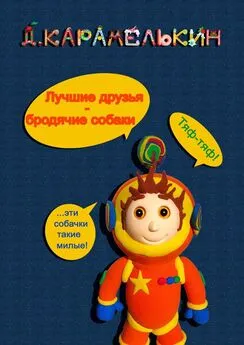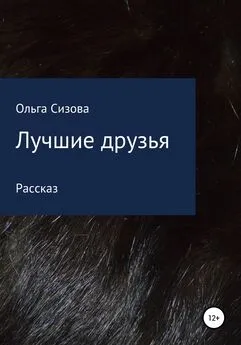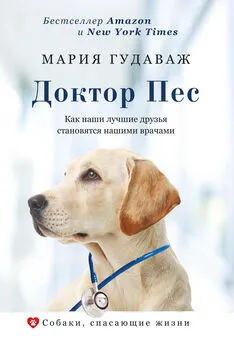Мария Гудаваж - Доктор Пес [Как наши лучшие друзья становятся нашими врачами] [litres]
- Название:Доктор Пес [Как наши лучшие друзья становятся нашими врачами] [litres]
- Автор:
- Жанр:
- Издательство:Литагент АСТ
- Год:2020
- Город:Москва
- ISBN:978-1-5247-4304-8, 978-5-17-116997-8
- Рейтинг:
- Избранное:Добавить в избранное
-
Отзывы:
-
Ваша оценка:
Мария Гудаваж - Доктор Пес [Как наши лучшие друзья становятся нашими врачами] [litres] краткое содержание
Собака лучше любого электронного прибора способна определить, например, заболевание раком – она делает это по запаху. Точно также собаки могут заранее предупреждать больного о приближении судорог или спазмов, о приступах внезапного сна и обмороках. Они сопровождают больных детей и взрослых, становясь для них не только друзьями, но и надежной опорой.
Автор рассказывает о том, как обучают и дрессируют таких собак и какие связи устанавливаются между ними и людьми, которые зачастую доверяют им свою жизнь. В формате PDF A4 сохранен издательский макет.
Доктор Пес [Как наши лучшие друзья становятся нашими врачами] [litres] - читать онлайн бесплатно ознакомительный отрывок
Интервал:
Закладка:
Finamore, P., et al. «Analysis of Volatile Organic Compounds: An Innovative Approach to Heart Failure Characterization in Older Patients». Journal of Breath Research 12, no. 2 (April 2018): p. 026007, doi:10.1088/1752–7163/aa8cd4.
Fischer-Tenhagen, Carola, et al. «A Proof of Concept: Are Detection Dogs a Useful Tool to Verify Potential Biomarkers for Lung Cancer?» Frontiers in Veterinary Science 5 (14 March 2018), doi:10.3389/fvets.2018.00052.
Gasparri, Roberto, et al. «Volatile Signature for the Early Diagnosis of Lung Cancer». Journal of Breath Research 10, no. 1 (9 February 2016): 016007, doi:10.1088/1752–7155/10/1/016007.
Gordon, A. C., and R. D. Spicer. «Impregnated Via a Bullet?» The Lancet 333, no. 8640 (1 April 1989): 737, doi:10.1016/s0140–6736 (89) 92264–2.
Gordon, Robert T., et al. «The Use of Canines in the Detection of Human Cancers». Journal of Alternative and Complementary Medicine 14, no. 1 (30 January 2008): 61–67, doi:10.1089/acm.2006.6408.
Hackner, Klaus, et al. «Canine Scent Detection for the Diagnosis of Lung Cancer in a Screening-like Situation». Journal of Breath Research 10, no. 4 (27 September 2016): 046003, doi:10.1088/1752–7155/10/4/046003.
Hackner, Klaus, and Joachim Pleil. «Canine Olfaction as an Alternative to Analytical Instruments for Disease Diagnosis: Understanding “Dog Personality” to Achieve Reproducible Results». Journal of Breath Research 11, no. 1 (9 January 2017): 012001, doi:10.1088/1752–7163/aa5524.
Horvath, György, et al. «Characteristic Odour in the Blood Reveals Ovarian Carcinoma». BMC Cancer 10, no. 1 (24 November 2010): doi:10.1186/1471–2407–10–643.
Horvath, György, et al. «Cancer Odor in the Blood of Ovarian Cancer Patients: A Retrospective Study of Detection by Dogs during Treatment, 3 and 6 Months Afterward». BMC Cancer 13, no. 1 (26 August 2013), doi:10.1186/1471–2407–13–396.
Horváth, I., et al. «Exhaled Biomarkers in Lung Cancer». European Respiratory Journal 34, no. 1 (July 2009): 261–275, doi:10.1183/09031936.00142508.
Interviews with Bonita and Jane Whitfield; Hywel Williams, MD, DSc, professor of dermato-epidemiology, Centre of Evidence Based Dermatology, University of Nottingham; Claire Guest, Rob Harris, and Jenny Corish, Medical Detection Dogs; Patrick Hilverink and Danielle de Jonge, Royal Dutch Guide Dog Foundation; Craig Angle, PhD, codirector, Canine Performance Sciences, College of Veterinary Medicine, Auburn University; Cindy Otto, DVM, PhD, founder and executive director, Penn Vet Working Dog Center, University of Pennsylvania; Jennifer Essler, PhD, and Pat Kaynaroglu, Penn Vet Working Dog Center; Klaus Hackner, MD, Krems University Hospital, Austria; Glenn Ferguson, CancerDogs; Akiei Shibata, Kaneyama town clinic official; Masao Miyashita, MD, PhD, Nippon Medical School Chiba Hokusoh Hospital; Yuji Sato, St. Sugar Japan; Wataru and Sayoko Inoue; Hiroshi Suzuki, Kaneyama mayor; Eiko Tan; Tsuruko Chigahara; Keimi Miura; Kyoichi Seo, MD; Seitero and Sanae Miura; Andreas Mershin, PhD, research scientist and director, Label Free Research Group, Massachusetts Institute of Technology; and George Preti, PhD, analytical organic chemist, Monell Chemical Senses Center, Philadelphia.
«Japanese Say Cancer Victims Shouldn’t Be Told». UPI, 3 April 1989. www.upi.com/Archives/1989/04/03/Japanese-say-cancer-victims-shouldnt-be-told/1020607579200/.
Jezierski, Tadeusz, et al. «Study of the Art: Canine Olfaction Used for Cancer Detection on the Basis of Breath Odour. Perspectives and Limitations». Journal of Breath Research 9, no. 2 (June 2015): 027001, doi:10.1088/1752–7155/9/2/027001.
«KDOG Cancer Detect Group». Institut Curie. Accessed 11 July 2018. kdog.institut-curie.org/.
«Key Statistics for Ovarian Cancer». American Cancer Society, last modified 8 January 2019. www.cancer.org/cancer/ovarian-cancer/about/key-statistics.html.
Kitiyakara, Taya, et al. «The Detection of Hepatocellular Carcinoma (HCC) from Patients’ Breath Using Canine Scent Detection: A Proof-of-Concept Study». Journal of Breath Research 11, no. 4 (13 September 2017): 046002, doi:10.1088/1752–7163/aa7b8e.
Kwak, Jae, et al. «Volatile Biomarkers from Human Melanoma Cells». Journal of Chromatography B 931 (15 July 2013): 90–96, doi:10.1016/j.jchromb.2013.05.007.
Lassya, Samhita, and Hans J. Gross. «The «Clever Hans Phenomenon» Revisited». Communicative & Integrative Biology 6, no. 6 (November 2013), doi:10.4161/cib.27122.
McCulloch, Michael, et al. «Diagnostic Accuracy of Canine Scent Detection in Early-and Late-Stage Lung and Breast Cancers». Integrative Cancer Therapies 5, no. 1 (1 March 2006): 30–39, doi:10.1177/1534735405285096.
«Medical Detection Dogs Receive Green Light for First Canine Prostate Cancer Trial in UK». Medical Detection Dogs. Accessed 28 September 2018. www.medicaldetectiondogs.org.uk/medical-detection-dogs-receive-green-light-for-first-canine-prostate-cancer-trial-in-uk/.
Mikkelson, David. «Woman Became Pregnant from a Civil War Bullet?» Snopes, last modified 22 June 2014. www.snopes.com/fact-check/son-of-a-gun/.
Mukherjee, Siddhartha. The Emperor of All Maladies: A Biography of Cancer (New York: Scribner, 2010).
Onion, Amanda. «Dogs Being Trained to Detect Cancer». ABC News, 11 June 2002. abcnews.go.com/Technology/story?id=97979.
«Oregon Woman Says Cat Detected Her Breast Cancer». KXAN, 5 November 2018. www.kxan.com/news/national-news/oregon-woman-says-cat-detected-her-breast-cancer/1573751209.
Palmer, Richard. «Prince Charles and Camilla Meet Medical Experts with a Nose for Trouble». Express , 11 March 2014. www.express.co.uk/news/royal/464270/Prince-Charles-and-Camilla-meet-Medical-Detection-Dogs.
Pickel, Duane, et al. «Evidence for Canine Olfactory Detection of Melanoma». Applied Animal Behaviour Science 89, no. 1–2 (November 2004): 107–116, doi:10.1016/j.applanim.2004.04.008.
Pirrone, Federica, and Mariangela Albertini. «Olfactory Detection of Cancer by Trained Sniffer Dogs: A Systematic Review of the Literature». Journal of Veterinary Behavior 19 (May – June 2017): 105–117, doi:10.1016/j.jveb.2017.03.004.
Pomerantz, Alan, et al. «The Possibility of Inventing New Technologies in the Detection of Cancer by Applying Elements of the Canine Olfactory Apparatus». Medical Hypotheses 85, no. 2 (August 2015): 160–172, doi:10.1016/j.mehy.2015.04.024.
«Regional Disparities of Cancer Incidence». Chuokoron (Japan) 6 (2016).
«Skin Fun Facts». Forefront Dermatology, 24 October 2017. forefrontdermatology.com/skin-fun-facts/.
Sonoda, Hideto, et al. «Colorectal Cancer Screening with Odour Material by Canine Scent Detection». Gut 60, no. 6 (31 January 2011): 814–819, doi:10.1136/gut.2010.218305.
Spector, Paul. «Canines and Cancer Detection: The New PET Scan?» HuffPost . 12 May 2015. www.huffpost.com/entry/dog-cancer-detection_n_7254746.
«The Strange Powers of Animals – Mysterious Universe 1994». YouTube video, 24:03, published by Sromba, 8 September 2015. https://youtube/_BC0vH0jrXY.
Taverna, Gianluigi, et al. «PD19–01 Prostate Cancer Urine Detection through Highly-Trained Dogs’ Olfactory System: A Real Clinical Opportunity». Journal of Urology 191, no. 4 (April 2014), doi:10.1016/j.juro.2014.02.1520.
Taverna, Gianluigi, et al. «Sniffing Out Prostate Cancer: A New Clinical Opportunity». Central European Journal of Urology 68, no. 3 (15 October 2015), doi:10.5173/ceju.2015.593.
Walczak, Marta, et al. «Impact of Individual Training Parameters and Manner of Taking Breath Odor Samples on the Reliability of Canines as Cancer Screeners». Journal of Veterinary Behavior 7, no. 5 (September – October 2012): 283–294, doi:10.1016/j.jveb.2012.01.001.
Williams, Hywel, and Andres Pembroke. «Sniffer Dogs in the Melanoma Clinic?» The Lancet 333, no. 8640 (1 April 1989): 734, doi:10.1016/s0140–6736(89)92257–5.
Willis, Carolyn M., et al. «Olfactory Detection of Human Bladder Cancer by Dogs: Proof of Principle Study». BMJ 329 (23 September 2004), doi:10.1136/bmj.329.7468.712.
«You’ve Heard of the CAT Scan? Now, Here’s the Dog Scan: Canine Helps with Cancer Detection». Imaginis, last modified 15 January 2001.www.imaginis.com/breast-health-news/you-146-ve-heard-of-the-cat-scan-now-here-146-s-the-dog-scan-canine-helps-with-cancer-detection-date-1.
Глава 4
Biagini, D., et al. «Determination of Volatile Organic Compounds in Exhaled Breath of Heart Failure Patients by Needle Trap Micro-Extraction Coupled with Gas Chromatography-Tandem Mass Spectrometry». Journal of Breath Research 11, no. 4 (30 November 2017): 047110, doi:10.1088/1752–7163/aa94e7.
Cikach, Frank S., and Raed A. Dweik. «Cardiovascular Biomarkers in Exhaled Breath». Progress in Cardiovascular Diseases 55, no. 1 (July– 2012): 34–43, doi:10.1016/j.pcad.2012.05.005.
Coren, Stanley. «Beware the Howling Dog». Modern Dog . Accessed 29 October 2018. moderndogmagazine.com/articles/beware-howling-dog/42779.
Erlinger, Catherine. «The Health Benefits of Having a Dog». Heart Foundation, 9 March 2018. theheartfoundation.org/2018/03/09/the-health-benefits-of-having-a-dog/.
Faulkner, Lisa A. «Cardiac Alert Dog Saves Handler from Stroke». Anything Pawsable , 26 June 2013. www.anythingpawsable.com/cardiac-alert-dog-saves-handler-from-stroke/.
Finamore, P, et al. «Analysis of Volatile Organic Compounds: An Innovative Approach to Heart Failure Characterization in Older Patients». Journal of Breath Research 12, no. 2 (6 February 2018): 026007, doi:10.1088/1752–7163/aa8cd4.
Goodavage, Maria. Soldier Dogs: The Untold Story of America’s Canine Heroes (New York: Dutton, 2012).
Hinton, William, et al. «Insulin Therapy in Type 3c Diabetes – More Common in Chronic Rather than Acute Pancreatitis». Diabetes 67, suppl. 1 July 2018. doi.org/10.2337/db18–1047-P.
Interviews with Deanne (DeeDee) Kramer; Nick and Tammy Blackford, North Coast K 9; Tina Brassel; Alan Stryker; Mary McNeight, Service Dog Academy; «Kevin Turner,» who asked me to use an alias, as explained in the book; and Paul and Vivian Willis.
Klein, Karin. «What Is Type 3c Diabetes?» A Sweet Life. 7 November 2017. asweetlife.org/what-is-type-3c-diabetes/.
Lee, Donovan. «Multi-Purpose Canine Program Proves Invaluable». DVIDS, 15 May 2015. www.dvidshub.net/news/167653/multi-purpose-canine-program-proves-invaluable.
Levine, Glenn N., et al. «Pet Ownership and Cardiovascular Risk». Circulation 127, no. 23 (9 May 2013): 2353–2363, doi:10.1161/cir.0b013e31829201e1.
Marcus, Dawn A., and Amrita Bhowmick. «Survey of Migraine Sufferers with Dogs to Evaluate for Canine Migraine-Alerting Behaviors». Journal of Alternative and Complementary Medicine 19, no. 6 (June 2013): 501–508, doi:10.1089/acm.2012.0234.
Miles, Otesa. «Migraine Statistics». Migraine.com, last modified November 2010. migraine.com/migraine-statistics/.
«The Strange Powers of Animals – Mysterious Universe 1994». YouTube video, 24:03, published by Sromba, 8 September 2015. https://youtube/_BC0vH0jrXY.
«The Top 10 Causes of Death». World Health Organization, 24 May 2018. www.who.int/news-room/fact-sheets/detail/the-top-10-causes-of-death.
«What Are the Ehlers-Danlos Syndromes?» Ehlers-Danlos Society. Accessed 19 May 2018. www.ehlers-danlos.com/what-is-eds/.
Читать дальшеИнтервал:
Закладка:
![Обложка книги Мария Гудаваж - Доктор Пес [Как наши лучшие друзья становятся нашими врачами] [litres]](/books/1059968/mariya-gudavazh-doktor-pes-kak-nashi-luchshie-druzya-s.webp)


![Дэвид Эпштейн - Универсалы [Как талантливые дилетанты становятся победителями по жизни] [litres]](/books/1059203/devid-epshtejn-universaly-kak-talantlivye-diletant.webp)
![Александр Силаев - Философия без дураков [Как логические ошибки становятся мировоззрением и как с этим бороться?] [litres]](/books/1064394/aleksandr-silaev-filosofiya-bez-durakov-kak-logiche.webp)
![Кристин Террилл - Все наши вчера [litres]](/books/1080908/kristin-terrill-vse-nashi-vchera-litres.webp)




